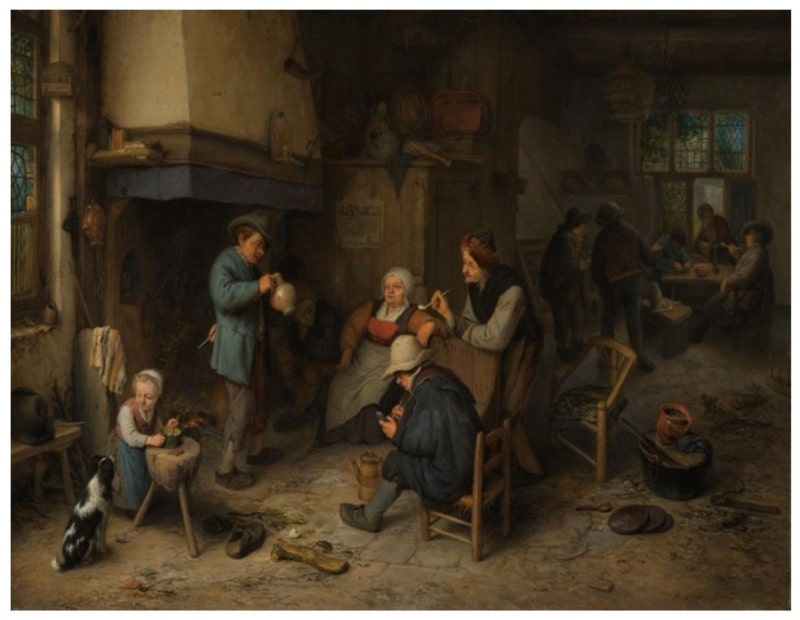Adriaen van Ostade: Master of Dutch Genre Painting
Adriaen van Ostade: Master of Dutch Genre Painting
The Dutch Golden Age (17th century) produced some of the most remarkable artists in history, with masters like Rembrandt, Vermeer, and Frans Hals dominating the scene. Among them was Adriaen van Ostade, a prolific painter and printmaker renowned for his lively depictions of peasant life, tavern scenes, and rustic interiors. His work offers a charming, sometimes humorous, glimpse into the everyday existence of 17th-century Dutch commoners.

Early Life and Training
Adriaen van Ostade was born in Haarlem in 1610, the son of a weaver. Little is known about his early years, but he likely trained under Frans Hals, the great portraitist who also taught Judith Leyster and Dirck Hals. Van Ostade’s early works show the influence of Hals’ loose brushwork and lively compositions.
He was also influenced by Adriaen Brouwer, a Flemish painter known for his expressive peasant scenes. Like Brouwer, van Ostade often depicted rowdy taverns, smokers, and brawling villagers, though his style gradually became more refined.
Artistic Style and Themes
Van Ostade specialized in genre painting, focusing on the lives of peasants and rural folk.
His works are characterized by warm, earthy tones – Using a rich palette of browns, reds, and ochres, he created cozy, intimate interiors.
Expressive figures – His peasants are often shown drinking, dancing, or engaging in boisterous activities, rendered with humor and vitality.
Detailed interiors – His tavern and cottage scenes feature meticulously rendered wooden beams, clay pots, and rustic furniture.
Unlike some of his contemporaries who idealized peasant life, van Ostade portrayed his subjects with a mix of realism and satire. Some scenes highlight the chaos of drunken revelry, while others show quieter moments of domestic life.
Major Works
Some of van Ostade’s most famous paintings include:
“The Fish Seller” (1660s) – A lively market scene showcasing his skill in capturing textures and expressions.
“Peasants in a Tavern” (1635) – A chaotic, humorous depiction of villagers drinking and quarreling.
“The Artist’s Studio” (1663) – A rare self-referential work showing a painter at his easel.
Peasants in an Interior (1661) – This painting, like many of his works, offers a glimpse into the daily existence of 17th-century Dutch peasants, blending realism with a touch of lighthearted satire.
In addition to paintings, van Ostade was an accomplished etcher, producing over 50 prints that further spread his influence across Europe.
Later Years and Legacy
As van Ostade matured, his style became more refined and detailed, with softer lighting and greater attention to texture. His later works often featured fewer figures and more serene compositions.
He remained in Haarlem throughout his life, becoming a respected member of the Guild of St. Luke and training several pupils, including his brother Isaac van Ostade and Cornelis Dusart.
Adriaen van Ostade died in 1685, leaving behind a vast body of work that continues to be celebrated for its charm, technical skill, and insightful portrayal of 17th-century Dutch life. Today, his paintings can be found in major museums, including the Rijksmuseum, Louvre, and Hermitage.
Adriaen van Ostade’s art provides a delightful window into the everyday world of the Dutch Golden Age. His ability to blend humor, realism, and exquisite craftsmanship ensures his place among the great genre painters of his time. Whether depicting a raucous tavern or a quiet cottage, van Ostade’s work remains a testament to the vibrancy of Dutch artistic tradition.

CanvasPaintArt

